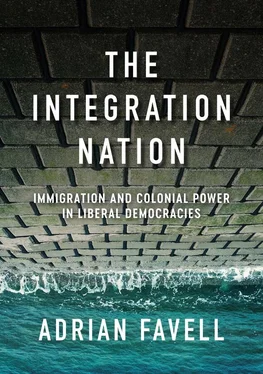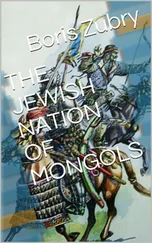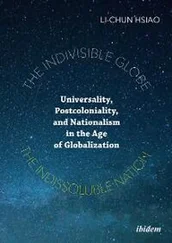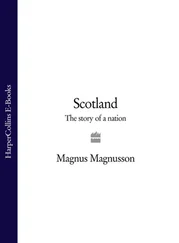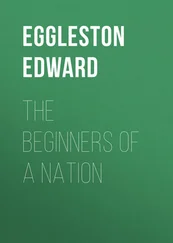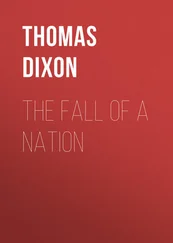In any given year, moreover, a much larger floating population might be present in the society as visitors – tourists or business people, but also students and long-term specialist workers on particular visas, and so on. Let’s call these people ‘free movers’ who come and go, a growing part of a globalized world. In Britain (prior to the COVID pandemic), this figure was given as between 35 and 40 million people annually (ONS 2019) – well over half the numbers for the national population – for short but indefinite periods of time. As noted, by definition, these populations again usually have nothing to do with ‘integration’ issues. At the same time, the state is also intensely interested in this very difficult to document and track population. It wants to maximize economic benefits from them: in many cases, it wants to make access easy and unproblematic, encourage their multiple cross-border ‘mobilities’ in an integrated regional or global economy, connect with them economically in any way it can. Yet it does not wish them to stay and certainly does not allow them any of the usual benefits of club membership of national residents: access to jobs, social protection, a voice in elections and so on – although, confusingly, it may look after them if they get run over in the street. From the point of view of pastorally managing the population – the birth-to-death issues reserved for ‘integrated’ nationals – it is, however, a largely irrelevant population; some other state is looking after them.
This floating population is usually invisible to immigration politics. Yet rendering them invisible is crucial to making legible those who are relevant: the ‘immigrants’. It matters intensely that those others who are to join the container – a very small proportion of the mobile, border-crossing population – can be clearly and decisively distinguished from the larger invisible group, no less than they need to be distinguished from ‘illegal’ or ‘unwanted’ migrants. In Britain, the floating population of ‘free movers’ is in fact around a hundred times larger than that of ‘immigrants’; i.e., among those crossing the border, there is one immigrant for every 100 mobile visitors present. There is only about one new immigrant per year for every 20 non-nationals. And, despite the intensity of debate, asylum seekers remain a small part of annual immigration, at its highest about a tenth (around 35,000 annually).
The skewed and very particular focus of political demography here becomes clear. While other mobile populations have remained largely invisible, the highly contentious British politics of immigration – when not focused on policing borders against the tiny number of irregulars who wash up on its shores – has centred on the failed target for the designated ‘immigrant’ population. This was infamously set by a former prime minister, David Cameron, as a net immigration of (only) 100,000 persons per year. This created a huge political outcry, as for years the real number was never lower than 300,000 (Cohen 2017). The target has since been scrapped, and the overall number is still growing (Vargas-Silva and Rienzo 2020). At the same time, 150,000–200,000 British nationals leave the British population annually (although they do not leave their citizenship). The huge controversies over Brexit in part centred on the fact that more than half of the ‘immigrants’ identified in these official UK statistics were in fact non-nationals from EU member states – over which the state had no legal control or restriction. They were EU citizens, with a kind of European citizenship that allowed them to come and go as they pleased, and live and work in British society, without in fact becoming, legally or politically, immigrants. There was no implication they would need to become full members; they were not subject to integration. In fact, they were ‘free movers’ and might have been better thought of as part of that floating international population. Yet the British state felt obliged to call them ‘immigrants’ and include them in those statistics. Politicians, the media and even many scholars referred to them as ‘EU immigrants’, even though this was a legal falsehood (Favell and Barbulescu 2018). Brexit, of course, ‘resolved’ this question – with further complications for ‘immigrant integration’ which I will trace later.
Other ‘immigrants’ in the same statistics had in contrast always been chosen and identified at the border, with strictly selective entry via work or family reunification rights, the two typical motives, unless they were recognized refugees. These immigrants were legally and politically designated as such in conventional terms. They have always been subject to integration and could follow the line all the way to membership and full citizenship. Counting and identifying them as part of the population ensures the continuity of the box that contains the total British population and secures its power. Integration would ultimately resolve the anomaly of their international migration. Yet, from this point of view, all other ‘mobile’ populations are irrelevant, including a large majority of the resident long-term non-nationals, who have a ‘right to remain’ – but also remain anomalous.
Integration and citizenship
The United Kingdom has its peculiarities as a nation-state, but this complicated set of arrangements regarding migration, immigration, free movement and other forms of mobility is not atypical of liberal democracies worldwide. To summarize, the archetypal liberal democratic nation-state – the ‘integration nation’ – is able to define itself when it identifies a (usually small) subset of the mobile international population as ‘immigrants’: those who have crossed a border and ‘settled’, and who are therefore subject to ‘integration’. Going beyond its formal definition (i.e., receiving nationality or a passport), citizenship as full membership will be defined by this process. This imposes a particular kind of obligation on both the state and the immigrant. This obligation does not apply to many other mobile populations, present on or passing through the territory, who are thereby ‘foreigners’ or ‘aliens’ and irrelevant to this question and excluded from it. This is regardless of whether they are in fact socially present, engaged in interactions with or connected in some way in the society – unless, of course, their legal status changes and they become ‘immigrants’. From the point of view of ‘integration’, the anomalous position of long-term or permanent foreign residents, as much as the undocumented or irregulars present, here becomes apparent. Asylum seekers awaiting a decision on ‘settlement’ and ‘immigration’ are also anomalous. Later, we will see how transnational populations more generally create further anomalies for ‘immigrant integration’. These groups are not yet, and may never be, a part of its national population, as defined by the sovereign designation of who is considered a member and who is not. Immigrants in contrast have to be, however diverse they are or however recently they arrived. Their linear progress towards citizenship is crucial to the nation-state’s power. In other words, this process – what is called ‘integration’ – defines the nation-state-society at its borders, as much as the means by which it binds all its members together in some unified and recognized sense as legitimate and formally equal citizens.
The state asserts these powers by naming these processes and its components, and claiming sovereignty over them (Sayad 2004 [1996]). The inherent political demography of nationalism and nation building I have been describing becomes methodological nationalism when it is blindly reflected in research on ‘immigrant integration’, rather than foregrounded and studied: i.e., work that simply assumes the object of study to be the objective process of transforming outsider ‘immigrants’ into insider ‘citizens’ of a pre-existing population container, according to measures of attainment of parity with existing members. Such work overlooks how those same actions work to define, constitute and reproduce the container itself, and how other categories of people are left out, made invisible or fail by definition to attain these statuses.
Читать дальше
